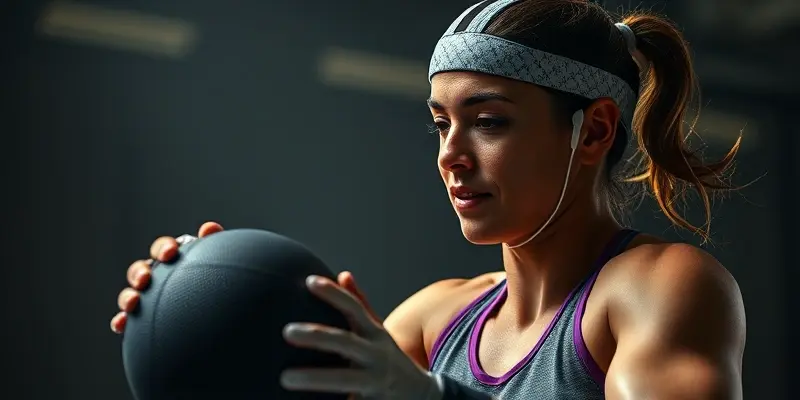Smart Recovery: How Golf Swing Sensors Help You Prevent Injuries and Bounce Back Stronger
In today’s fitness world, recovery is just as crucial as the workout itself. Whether you’re an amateur golfer, a seasoned athlete, or someone passionate about staying active, protecting your body and speeding up your comeback from setbacks makes all the difference. But what if a simple wearable could guide your swing, alert you to potential trouble, and help you optimize every step of your recovery? Let’s explore how golf swing sensors, especially wrist-worn ones, are transforming injury prevention, rehabilitation, and the comeback journey—for everyone.
How Golf Swing Sensors Work: Technology That Moves With You
Ever wish you had a coach watching every swing, ready to spot even the tiniest mistake before it causes trouble? That’s essentially what a golf swing sensor does.
These compact devices—often as simple as a smartwatch—track your wrist and body motion using inertial sensors. They precisely measure joint angles, force, and your overall movement pattern during a swing. Unlike traditional video analysis, sensors give you instant, quantitative feedback, allowing you to make smart adjustments on the fly, even when you’re practicing alone at the driving range.
Key features include:
- Real-time swing analysis right on your wrist
- Detection of abnormal or risky movement patterns
- Long-term tracking to measure progress and recovery
Practical Ways Swing Sensors Prevent Injuries
Injuries are common in golf—think of aching backs, sore shoulders, or stressed knees. The swing might look smooth, but repetitive motions can take a toll.
Golf swing sensors help by:
- Spotting Trouble Early: The sensors watch for excessive twisting, poor posture, or overloading of joints—patterns that often lead to injuries.
- Visualizing Movement Weaknesses: By reconstructing your full-body motion, sensors highlight technical flaws, like collapsing posture or inconsistent hip rotation.
- Custom Coaching: Because every athlete’s movement is unique, sensors create a personal “biomechanical signature.” That means early warnings are tailored to your body—not just generic advice.
Imagine catching poor alignment long before you feel pain, or knowing exactly when you can safely push your training further. That’s preventative power in your pocket.
From Injury to Comeback: Sensors in Rehabilitation
If you’re on the road to recovery, motivation and measurable progress are vital. This is where swing sensors truly shine.
Here’s how sensors support recovery:
- Track Healing Progress: By comparing your movement data over time, you—and your rehab team—can see both improvements and potential setbacks.
- Guide Safe Practice: Sensor feedback ensures you’re moving properly during recovery, preventing re-injury.
- Boost Motivation: Visualizing achievements, even small ones, keeps you motivated and helps you focus on progress, not just setbacks.
You’re not guessing about your readiness to return—you have real, personalized data guiding you every step of the way. For additional strategies on staying motivated and tracking recovery, check out our injury recovery checklist.
Integrated Recovery: Muscle Repair, Nutrition, and Mindset
Golf swing sensors don’t repair muscles directly, but they are a foundation for a smart, holistic recovery strategy.
- Pair with Muscle Recovery Tools: Use sensor data to determine when it’s safe to use massage guns or stretching routines, optimizing intensity without risking re-injury.
- Guide Nutrition Choices: When sensors detect heavy loading or micro-injuries, it’s a signal to boost your recovery meals—think anti-inflammatory foods or extra protein. This aligns well with the science of antioxidants in sports nutrition to aid injury prevention and recovery.
- Support Positive Mindset: The real-time feedback and tracked milestones reinforce your motivation, helping fight frustration during longer recovery paths.
A data-driven approach keeps your recovery grounded, focused, and integrated across body and mind.
Getting Started: Tips and Real-World Inspiration
Ready to try swing sensors? Here’s how to start:
- Choose a user-friendly, wrist-worn sensor for easy setup out on the course.
- Use guided apps or platforms with clear visuals and recommendations.
- Share your sensor data with a coach or healthcare provider for personalized insights.
- Set simple milestones—like reaching consistent swing angles or reducing joint stress—and celebrate each win.
Real-life success: Many golfers, from weekend enthusiasts to elite athletes, report shorter recovery times and fewer injuries after using these systems. The combination of instant feedback and personalized goals makes sustainable improvement possible.
Key Takeaways
- Golf swing sensors empower injury prevention and recovery by revealing hidden movement risks and tracking your personal progress.
- Data-driven insights support effective rehabilitation, nutrition planning, and motivation, reducing downtime and frustration.
- These tools are accessible and beginner-friendly, making cutting-edge recovery available to anyone, not just professionals.
If you’re aiming to play longer, safer, and stronger, integrating a simple swing sensor could be your smartest upgrade yet. Why guess, when you can know?
Stay strong, stay smart, and keep your comeback on track!— The GymPulse Team

